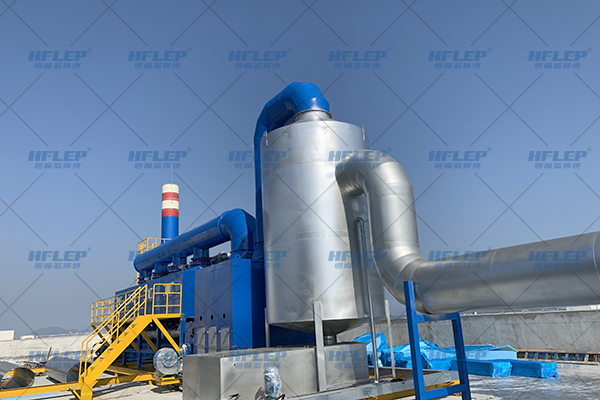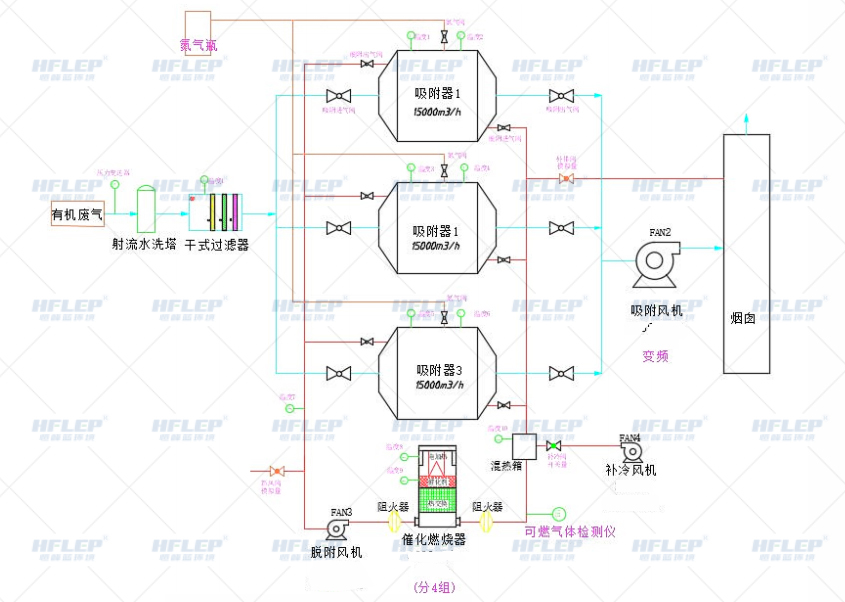Experienced Manufacturers
Production plant area of more than 10,000 square feet, more than 100 people construction team.
 Hotline
Hotline

Industry Introduction
Nanomaterials are materials where at least one dimension of the three-dimensional spatial scale is in the nanoscale (1-100 nm), which is a new generation of materials consisting of nanoparticles with dimensions between those of atoms, molecules and macroscopic systems. Due to the small scale of their constituent units, interfaces occupy a considerable amount of the composition. As a result, nanomaterials have a variety of characteristics, which lead to the emergence of many special properties of systems composed of nanoparticles that are different from the usual bulk macroscopic material systems.
Pollution hazards
The main exhaust gases generated during the production of nanomaterials are the vocs exhaust gases generated during the production of vertical mills, densifiers, and granulators.
Thin Film Exhaust Treatment Programme Overview
For the nanomaterials production of exhaust gas VOCs treatment technology, now in line with environmental emission requirements, and play a cost-effective treatment technology, is the use of wind reduction and enrichment + combustion method of treatment technology is more economical and energy-saving. Suggested use: dry filters + wind enrichment + catalytic combustion combination of governance, governance can meet the emission requirements of the standard!
Film exhaust treatment process

Other treatment technology solutions
Reason for choice

Production plant area of more than 10,000 square feet, more than 100 people construction team.

A number of engineers and technicians, most of whom have more than 10 years of experience and have worked on numerous projects.

Adoption of the latest domestic and international treatment technology, with high treatment efficiency.

According to the actual needs of the project, free to customise the corresponding exhaust gas treatment solutions, all regions of the country package to meet the emission standards.

Passed the third level of construction enterprise qualification and a number of technical patents...

1000+ project experience, more than 100 industry partners, complete environmental protection qualification.
Contact - Ways
Contact information
Catalytic combustion machine is a dry filter + adsorption de...

Activated carbon adsorption and desorption + CO catalytic co...

Zeolite rotor concentration + RTO regenerative incinerator c...

Zeolite rotor concentration + CO catalytic combustion proces...

CO catalytic combustion + TO direct combustion furnace proce...

For low concentration and low air volume of waste gas treatm...


Industry Introduction
Nanomaterials are materials where at least one dimension of the three-dimensional spatial scale is in the nanoscale (1-100 nm), which is a new generation of materials consisting of nanoparticles with dimensions between those of atoms, molecules and macroscopic systems. Due to the small scale of their constituent units, interfaces occupy a considerable amount of the composition. As a result, nanomaterials have a variety of characteristics, which lead to the emergence of many special properties of systems composed of nanoparticles that are different from the usual bulk macroscopic material systems.
Pollution hazards
The main exhaust gases generated during the production of nanomaterials are the vocs exhaust gases generated during the production of vertical mills, densifiers, and granulators.
Thin Film Exhaust Treatment Programme Overview
For the nanomaterials production of exhaust gas VOCs treatment technology, now in line with environmental emission requirements, and play a cost-effective treatment technology, is the use of wind reduction and enrichment + combustion method of treatment technology is more economical and energy-saving. Suggested use: dry filters + wind enrichment + catalytic combustion combination of governance, governance can meet the emission requirements of the standard!
Film exhaust treatment process

Other treatment technology solutions